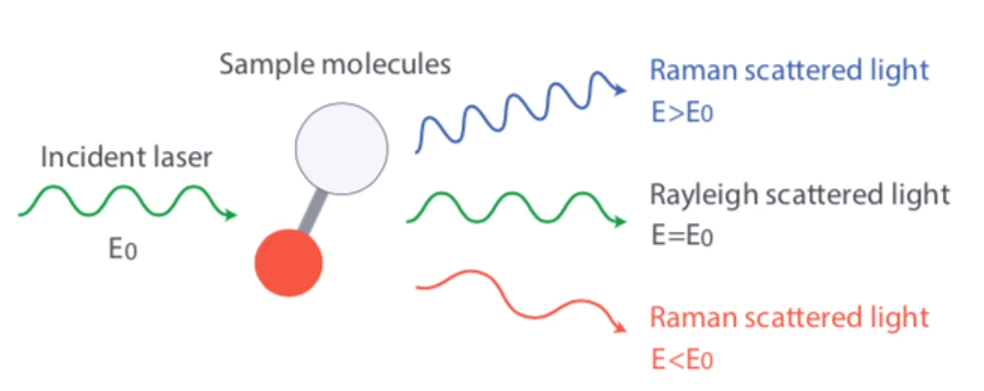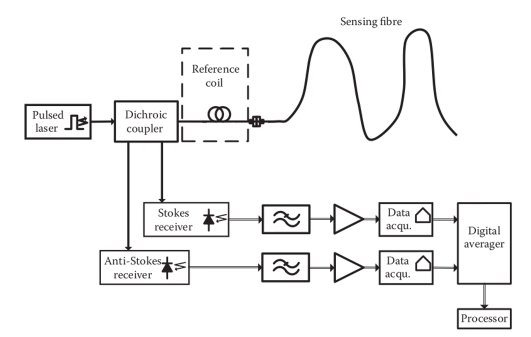Introduction
DTS(Distributed Temperature Sensing) focuses on Raman backscatters, compared to DAS, which focused on Rayleigh backscatters.
Raman scattering

- Raman scattering <-> Molecular vibration <-> Temperature
- Note that the T must be in Kelvin.
It could be simplified to the following formula, applying the ratio:
R(T)=(KasKs)(λsλas)4exp(−SLET)It’s obvious that the low temperature is less sensitive than high temperature from the formula.

Propagation in fiber
It has a different co-efficient in that OTDS formula from DAS:
Pas(z)=Ep(0)⋅ηas(z)⋅exp(−∫z0(αp(u)+αas(u))⋅du)
- In most cases we only measure the amplitude ratio, for it will erase most of the terms.
With a propagation x = z: R(T(z))=(KasKs)(λsλas)4exp(−SLET)⋅exp(−∫z0(αp(u)−αas(u))⋅du
文档信息
- 本文作者:Shenyao Jin
- 本文链接:https://shenyaojin.github.io/2022/08/17/measuring-prin/
- 版权声明:自由转载-非商用-非衍生-保持署名(创意共享3.0许可证)